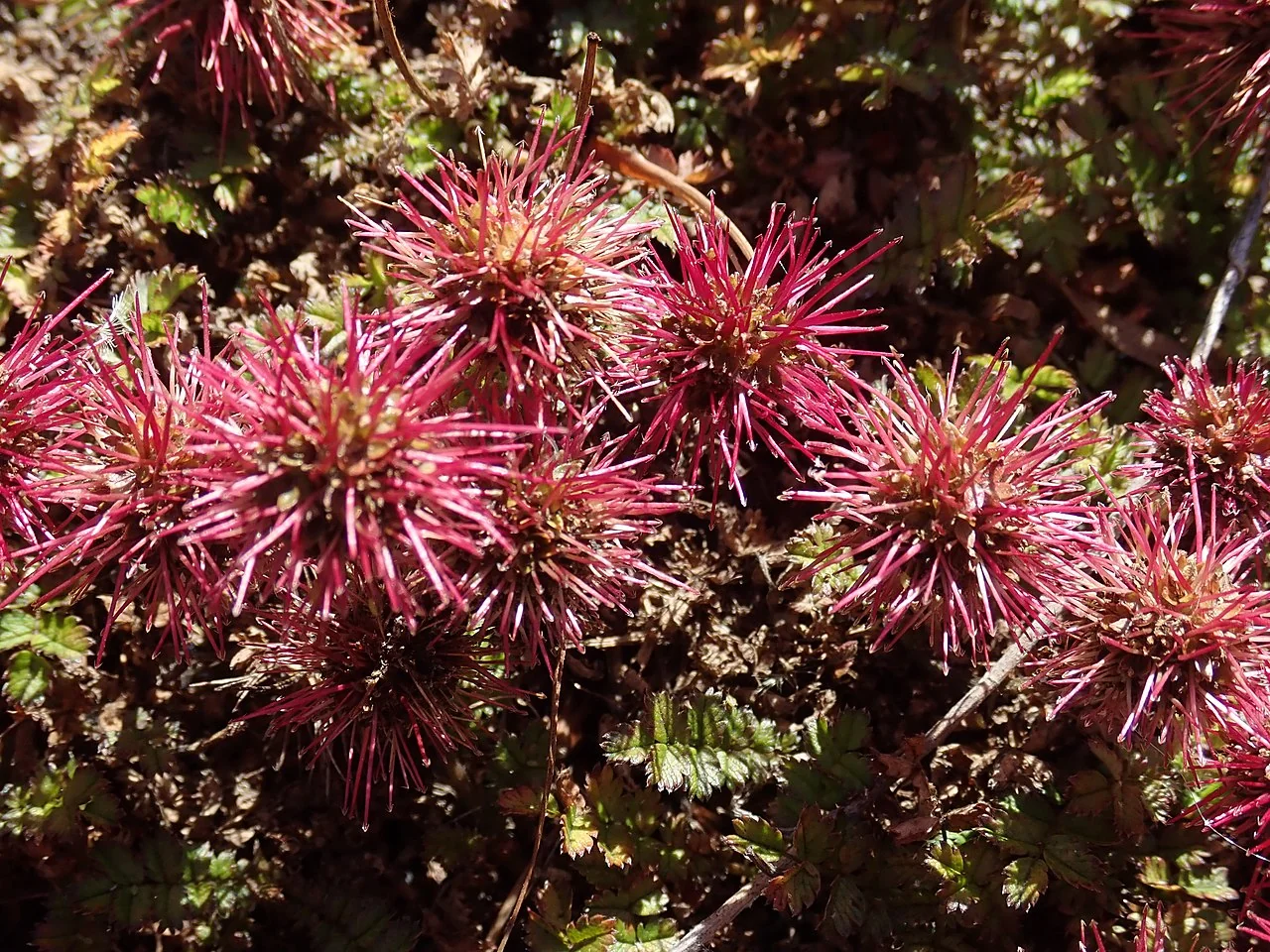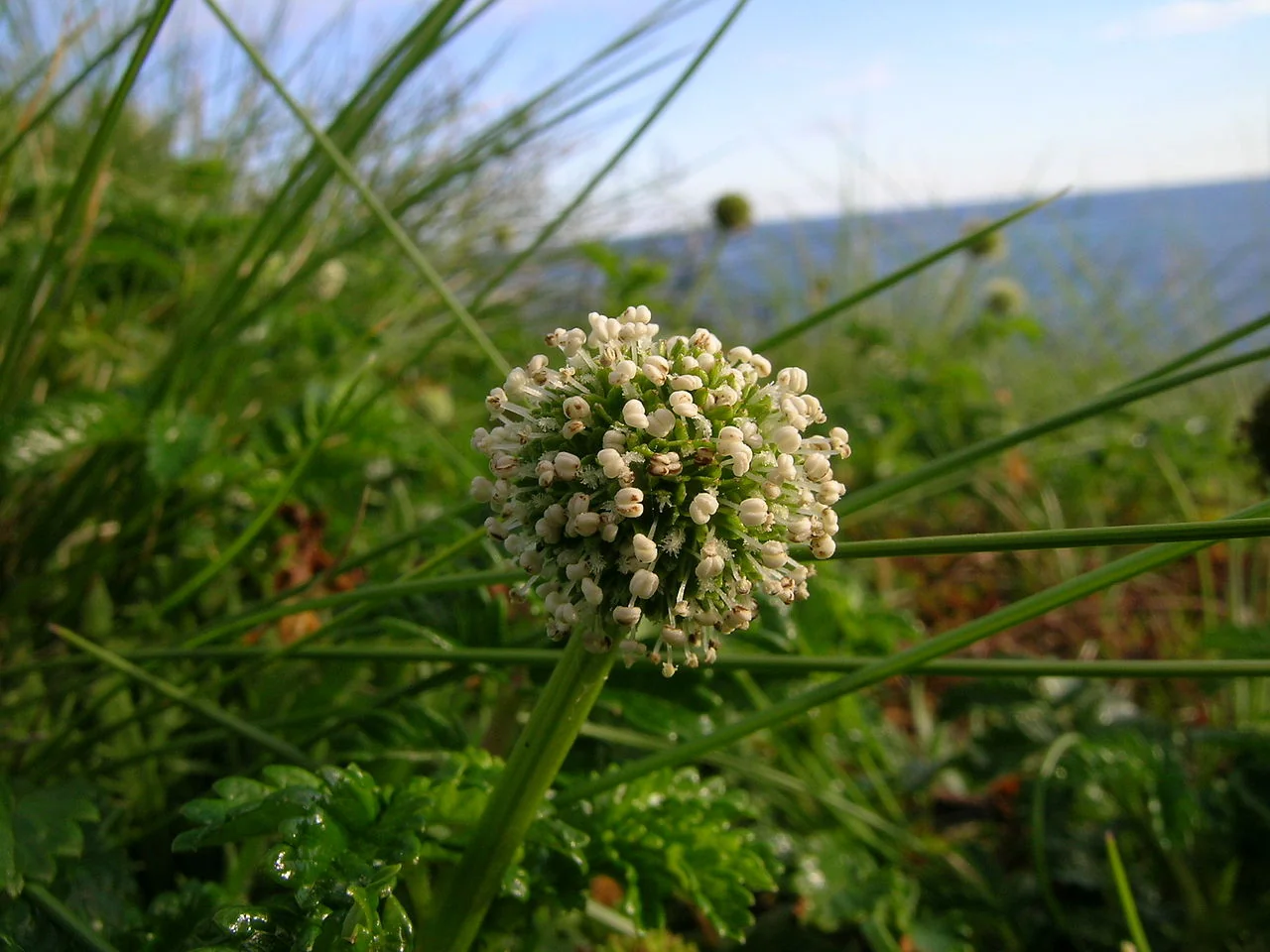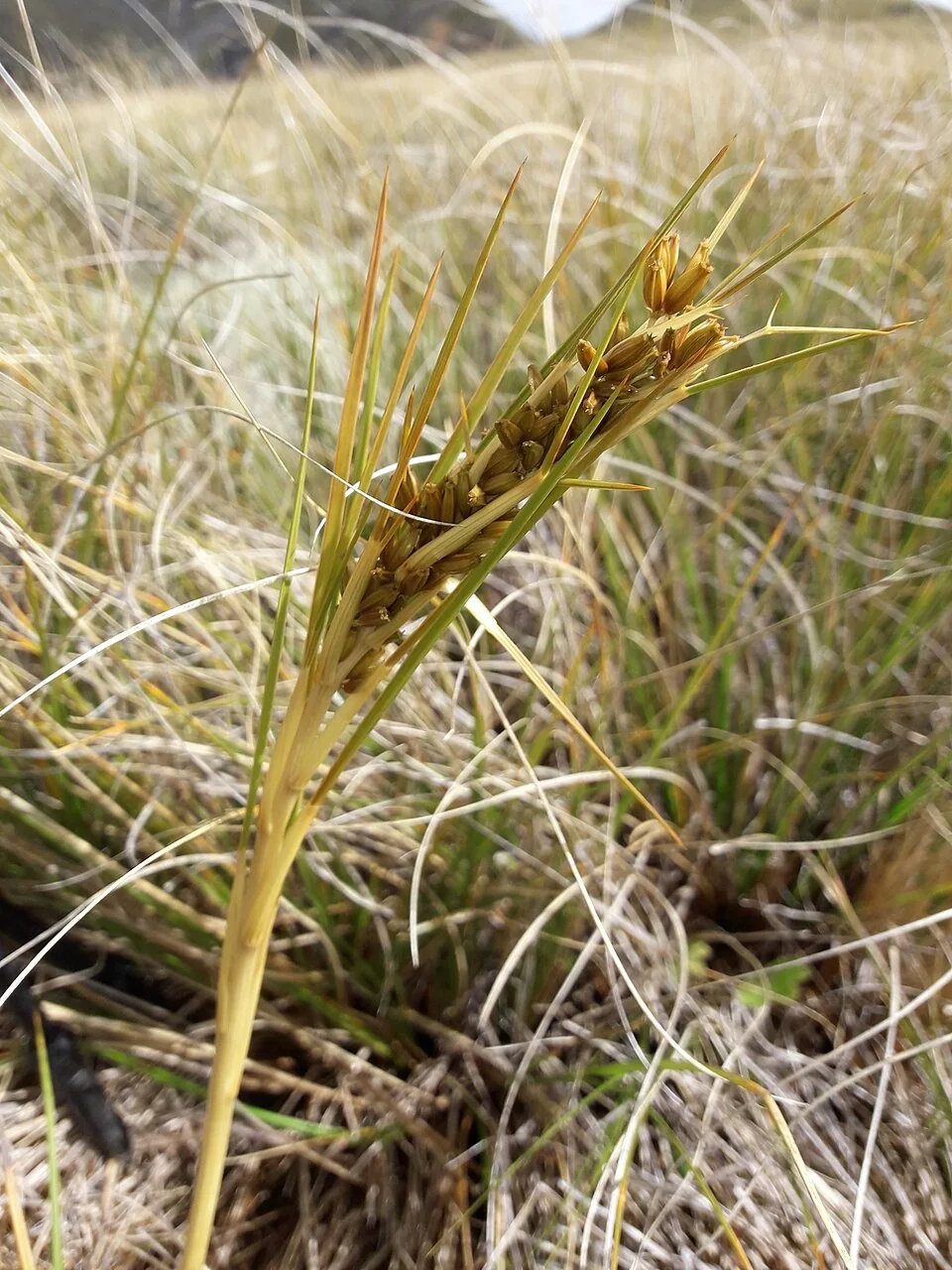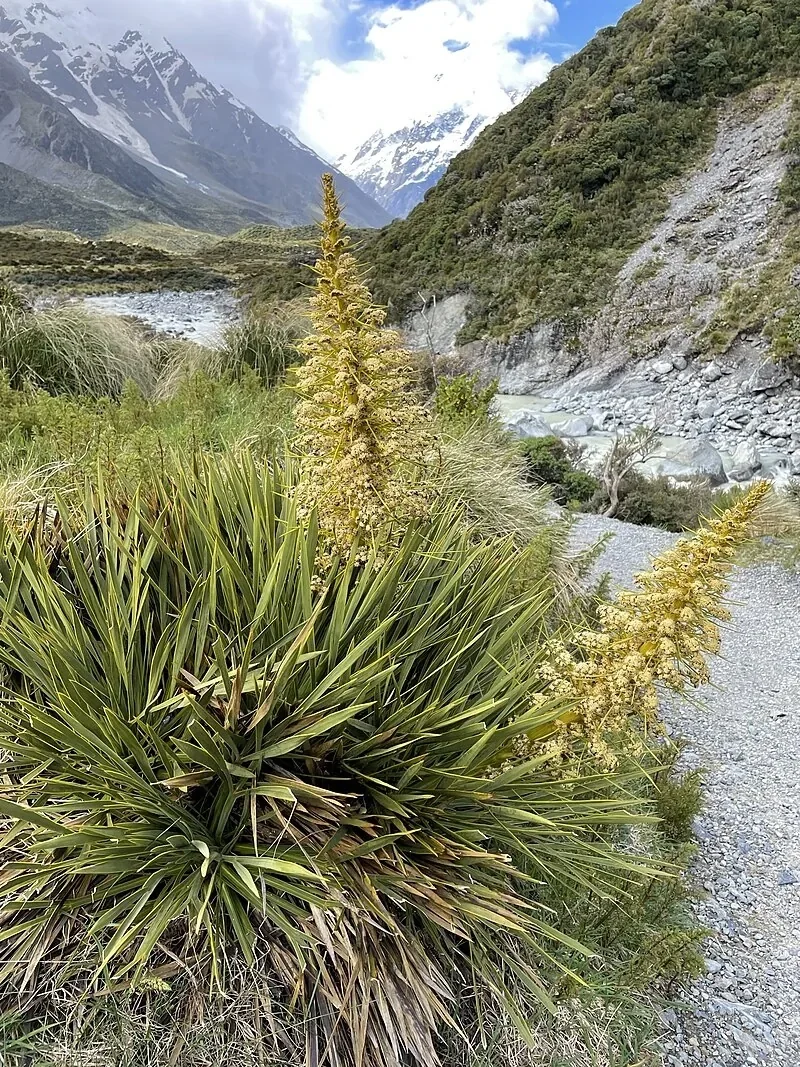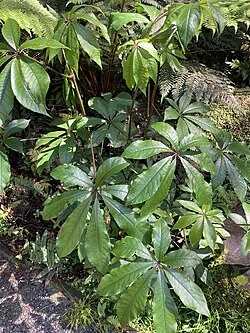
Pāte
Schefflera digitata
Introduction
Pāte (scientific name: Schefflera digitata ) is a distinctive native tree known for its large palmate leaves with 5-10 finger-like leaflets, earning it the common name "Seven-Fingered Tree". This fast-growing tree produces striking panicles of small greenish flowers followed by purple berries, making it an excellent choice for both restoration projects and garden landscapes. Endemic to New Zealand, it's valued for its tropical appearance and ecological benefits. Explore more in the native plants index .

Plant Description
Botanical Features
Pāte ( Schefflera digitata ), also known by its Māori names pātē, pātē-tē, pātātē, kōtētē, and common names like seven-finger or umbrella tree, is a broadleaf evergreen shrub or tree endemic to New Zealand. It is the only New Zealand representative of the genus Schefflera. It is a small, spreading tree that can grow up to 8 meters high with stout, irregularly branched trunks. The leaves are palmate, meaning they fan out like fingers on a hand, typically with three to nine (often seven) soft, thin leaflets. New foliage can emerge light green with pink-red veins, maturing to dark green. The leaflets have sharply serrated margins. Greenish flowers emerge in the summer, arranged in large, multi-branched panicles up to 35 cm across, with small greenish-cream flowers in umbels. These are followed by fleshy, round, dark purple to black fruits, about 3.5 mm in diameter, which ripen in two to three months. It prefers damp, shady parts of lowland to lower montane forests, from sea level up to 1,200 meters, and is commonly found along stream banks and shady forest roadsides.
Quick Facts
Essential Information
| Scientific Name | Schefflera Digitata |
|---|---|
| Height | 3 - 8 m |
| Spread | 2 - 4 m |
| Water Needs | High; prefers consistently moist soil |
| Light | Partial shade to full sun |
| Frost Tolerance | Moderate; can be damaged by heavy frosts |
| Salt Tolerance | Low |
| Growth Rate | Fast |
| Lifespan | Tree |
Climate Best Suited to
Pat is found throughout New Zealand, from lowland to montane forests. It thrives in damp, sheltered, and humid conditions. While it can tolerate a range of climates, it does best in areas without extreme frost or drought.
Regional Suitability
| Whangārei | Ideal |
| Auckland | Ideal |
| Hamilton | Suitable |
| Rotorua | Suitable |
| Tauranga | Ideal |
| Gisborne | Ideal |
| New Plymouth | Ideal |
| Whanganui | Ideal |
| Palmerston North | Suitable |
| Napier | Ideal |
| Wellington | Ideal |
| Nelson | Ideal |
| Christchurch | Suitable |
| Dunedin | Suitable |
| Invercargill | Suitable |
| City | Climate Suitability |
|---|
Natural Habitat
Pāte ( Schefflera digitata ), also known as seven-finger or umbrella tree, is a broadleaf evergreen shrub or tree endemic to New Zealand. It is found throughout the North Island, South Island, and Stewart Island, from sea level up to 1,200 meters (3,900 ft).
Key Habitats Include:
- Lowland to Lower Montane Forests: This species thrives in damp, shady parts of lowland to lower montane forests, indicating its preference for sheltered and moist conditions.
- Stream Banks and Forest Roadsides: It is commonly seen along stream banks and on shady forest roadsides, where it benefits from consistent moisture and protection from direct sunlight.
Preferred Conditions:
- Damp and Shady: Pāte prefers damp, shady, and humid conditions, reflecting its natural understory habitat.
- Soil: It thrives in fertile, moist, well-draining soil rich in organic matter, mimicking forest floor conditions.
- Frost Tolerance: It can tolerate moderate frosts but may be damaged by heavy frosts.
The widespread distribution and preference for damp, shaded forest environments of Schefflera digitata underscore its ecological importance in contributing to the biodiversity and structural complexity of New Zealand's native forests.
Plant Conservation
Schefflera digitata , commonly known as pātē or seven-finger, is a tree species endemic to New Zealand. Its current conservation status is classified as "Not Threatened" by the NZPCN. While Schefflera digitata itself is not considered threatened, it is an important host for the parasitic plant Dactylanthus taylori , also known as "wood rose," which is threatened with extinction, partly due to poaching for curios.
Growing Requirements
Soil Requirements
Pāte ( Schefflera digitata ) thrives in fertile, moist, well-draining soil rich in organic matter. It naturally grows along stream banks and damp forest margins, requiring consistently moist conditions without waterlogging. The soil should mimic forest floor conditions with plenty of decomposed organic material. A slightly acidic to neutral pH (6.0-7.0) is preferred.
Light Requirements
Pāte performs best in partial shade to full shade conditions, reflecting its natural forest understory habitat. While it can tolerate deep shade when young, and partial sun, it looks most attractive in dappled light where its large, soft leaves are protected from sun scorch. Avoid hot, exposed positions.
Water Requirements
Consistent moisture is essential for Pāte as it does not tolerate drought well. It requires regular watering, especially during dry periods, and performs best when soil moisture is maintained year-round. High humidity and air moisture are beneficial. Mulching is critical to maintain soil moisture and prevent the root zone from drying out.
Planting Guide
Where and How to Plant
Pāte ( Schefflera digitata ) favours cool, moist, well-drained forest soils and partial shade. Shelter young plants from harsh wind and direct summer sun in dry districts.
- Clear weeds over a 1 m circle; pre-wet dry soils.
- Plant at nursery depth in friable topsoil with added organic matter; avoid burying the stem.
- Water deeply and mulch to keep roots cool; maintain even moisture during the first two summers.
Formative pruning is rarely needed; protect from slugs/snails when small.
Ecological Role
Understorey Support
As a shade-tolerant understorey tree, pāte contributes to forest structure, providing humid microclimate and perches within gullies and valley floors. Umbellate flowers attract insects, and fleshy fruits are dispersed by birds.
Uses and Significance
Garden and Cultural Uses
- Underplanting: Its tolerance for shade makes it an excellent choice for planting underneath larger trees.
- Lush Foliage: Perfect for adding a tropical or subtropical feel to a garden.
- Revegetation: A fast-growing pioneer species that helps to establish a forest canopy.
- Rongo (Traditional Māori Medicine): The soft bark and leaves have various medicinal uses, including treating skin complaints. The wood was also used for friction fire-starting.
- Wildlife Garden: The small, dark purple fruits are an important food source for native birds.
Cultural Significance
Traditional Uses and Values
Schefflera digitata , commonly known as pātē, seven-finger, or umbrella tree, holds significant cultural importance in New Zealand, particularly for the Māori people. Its cultural value is deeply rooted in traditional ecological knowledge and practical uses. The large, distinctive palmate leaves of pātē were occasionally used for wrapping and as temporary shelter. The wood was utilized by Māori to create fire by friction. Historical records also indicate its use in making artifacts such as adze sockets and teka (darts). The sap of the pātē tree has been traditionally used for medicinal purposes, specifically to treat ringworm and sores on the skin. The leaves contain falcarindiol, a compound that exhibits activity against skin fungi like ringworm. The plant's ability to indicate specific forest conditions made it important in traditional ecological knowledge. It is also the most common host for Dactylanthus taylori , a parasitic plant known to the Māori as pua-o-te-reinga , or "the flower of the underworld." Pātē is one of New Zealand's most distinctive native trees and continues to hold cultural value, featuring in contemporary forest restoration and cultural education programs. It has several Māori names, including pātē, pātē-tē, pātātē, and kōtētē. The dark juice from its berries was also used as ink.
Landscaping Ideas
Shaded Bush Garden
Pair pāte with tree ferns, Coprosma , and shade-tolerant ferns in gullies and south-facing beds to recreate humid forest-floor conditions. Ideal as a mid-layer foliage contrast.
Seasonal Care
Pāte ( Schefflera digitata ) is a relatively fast-growing and adaptable native tree, but providing consistent care throughout the seasons, particularly regarding moisture and protection from extremes, will ensure its lush growth and health.
Spring
- Active Growth: Spring is the active growth period for Pāte, with new leaves emerging and growth accelerating as temperatures warm.
- Planting: This is an excellent time for planting new specimens.
- Mulching: Apply fresh organic mulch around established trees to retain moisture through the growing season.
- Watering: Monitor soil moisture and ensure consistent watering as the plant's needs increase with new growth.
Summer
- Flowering: Summer brings the flowering period, with panicles of small greenish-white flowers appearing below the leaves.
- Watering: Consistent watering is crucial during hot, dry periods as Pāte does not tolerate drought well.
- Protection: Provide additional shade in very hot climates to protect its soft foliage from sun scorch.
Autumn
- Fruiting: White to purple berries develop after summer flowering, providing an important food source for native birds.
- Planting: Autumn is another good time for planting as temperatures moderate.
- Watering: Continue regular watering but reduce frequency as growth slows with cooler temperatures.
- Winter Preparation: Prepare plants for winter by ensuring a good mulch layer is in place.
Winter
- Slower Growth: Winter is a slower growth period. In colder regions, the plant may become semi-deciduous or deciduous.
- Frost Protection: Protect young plants from heavy frosts, which can damage the soft foliage.
- Watering: Reduce watering but ensure the soil doesn't completely dry out. The berries continue to provide important winter food for birds.
Pruning
Techniques and Timing
Pāte ( Schefflera digitata ) has a naturally attractive, spreading form and generally requires minimal pruning. Intervention should be limited to essential maintenance to encourage healthy growth and maintain its desired shape.
- Maintenance Pruning: Remove any dead, damaged, or diseased branches as needed. This helps to maintain the plant's health and appearance.
- Shaping and Size Control: Light pruning can be done to maintain its size and shape, especially if space is limited. This can also encourage a denser, bushier habit.
- Timing: The best time for pruning is in late winter or early spring, after the risk of heavy frost has passed and before new growth begins. This allows the plant to recover quickly.
- Thinning: Thin out crowded areas to improve light penetration and air circulation within the canopy, which can help prevent fungal issues.
- Avoid Heavy Pruning: While Pāte responds well to pruning, avoid heavy or drastic cuts, as this can stress the plant. Its natural form is generally most attractive.
- Tools: Always use clean, sharp tools when pruning to prevent disease transmission. The soft nature of the foliage means careful handling is required to avoid damage during maintenance.
How to Grow Pāte
Pāte ( Schefflera digitata ), also known as Seven-finger, is a distinctive native tree known for its large palmate leaves and fast growth. This resilient tree is an excellent choice for both restoration projects and garden landscapes, valued for its tropical appearance and ecological benefits. Understanding its propagation methods is key to successfully cultivating this beautiful native tree.
From Cuttings
Pāte grows very easily from semi-hardwood cuttings taken in summer. Select healthy, non-flowering stems approximately 10-15 cm long. Remove the lower leaves and dip the cut end in a rooting hormone (though often not strictly necessary for this species). Insert the cuttings into a well-drained propagation mix, such as a blend of sand and perlite. Maintain a warm, moist environment, ideally under a plastic dome or in a propagator, to ensure high humidity. Cuttings will strike readily, typically rooting within 4-8 weeks. Once rooted, the new plants can be potted on and grown in a sheltered environment until they are ready for planting out.
From Seed
Propagating Pāte from fresh seed is also a reliable method. Collect ripe seeds in autumn from the small purple berries that develop after flowering. It is crucial to remove the fleshy pulp from the seed before sowing, as this can inhibit germination. Wash the seeds thoroughly and sow them fresh in a well-drained seed-raising mix. Lightly cover the seeds with fine medium. Maintain consistent moisture in the seed tray and keep it in a sheltered position with bright, indirect light. Germination is usually reliable and can occur within a few weeks to a couple of months. Once seedlings have developed a few true leaves and are stable, carefully prick them out into individual small pots, minimizing root disturbance. Grow them on in a sheltered environment with steady moisture before gradually hardening them off for planting out.
Pests and Diseases
Generally Trouble-Free
Pāte (Schefflera digitata) is generally a healthy and robust native plant, exhibiting strong natural resistance to major pest or disease issues when grown in appropriate conditions. Its resilience makes it a low-maintenance choice for gardeners, rarely requiring intervention for common problems found in other garden plants.
Bonus Tip
Expert Growing Advice
Keep pāte evenly moist and out of harsh afternoon sun while establishing. A light mulch and wind shelter prevent leaf scorch and help maintain the humid, forest-floor conditions it prefers.




